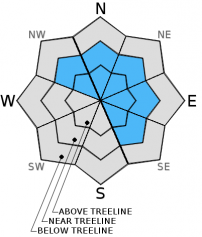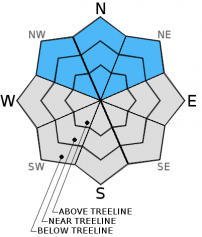| Wednesday | Wednesday Night | Thursday | |
|---|---|---|---|
| Weather: | Cloudy skies with rain and snow. Snow level 7,000' to 7,500'. | Cloudy skies with snow showers. | Mostly cloudy skies with a chance of rain and snow showers. |
| Temperatures: | 31 to 38 deg. F. | 25 to 32 deg. F. | 34 to 41 deg. F. |
| Mid Slope Winds: | Southwest | Southwest | Southwest |
| Wind Speed: | 15 to 25 mph with gusts to 35 mph. | 15 to 25 mph with gusts to 35 mph. | 10 to 15 mph with gusts to 25 mph. |
| Expected snowfall: | 4 to 8 | 3 to 5 | 0 to 2 |
| Wednesday | Wednesday Night | Thursday | |
|---|---|---|---|
| Weather: | Cloudy skies with snow. | Cloudy skies with snow showers. | Mostly cloudy skies with a chance of snow showers. |
| Temperatures: | 29 to 36 deg. F. | 24 to 31 deg. F. | 29 to 36 deg. F. |
| Ridge Top Winds: | Southwest | Southwest | Southwest |
| Wind Speed: | 35 to 45 mph with gusts to 65 mph. | 35 to 45 mph with gusts to 65 mph. | 20 to 30 mph with gusts to 45 mph. |
| Expected snowfall: | 6 to 10 | 4 to 6 | Trace to 2 |


























